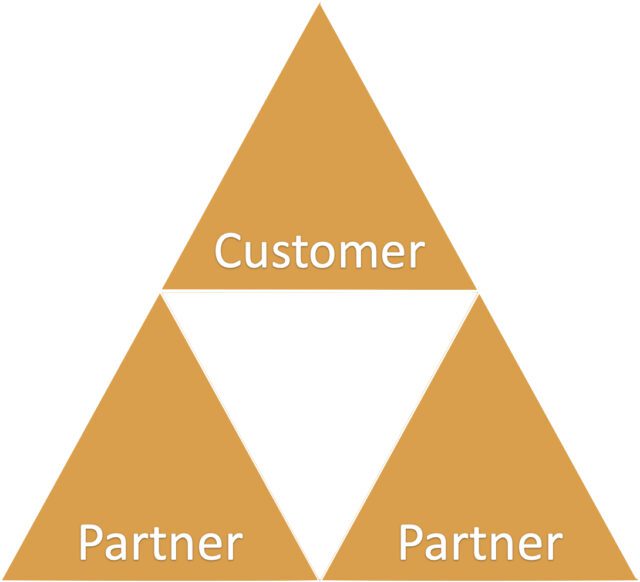Tip 4: Ensure a Three-Way Value Proposition
In an ideal world, altruism or selflessness – the capacity for doing something without expectation of anything in return except for the sheer pleasure of being able to serve others – is a good virtue to possess. Being selfless makes us akin to angels.
We don’t live in an ideal world, however, and it is only natural for us to expect something in return whenever we do a good deed, even if it is only the sheer pleasure that comes with service. Rarely do people give something for nothing. So before you approach a potential partner with a proposal for a partnership or alliance, you have to answer a question they will be sure to have: “What’s in it for me?”
Inasmuch as you have to determine the reason why you would want to partner with someone, you have to figure out what benefits your potential partner will get out of partnering with you. This concept is called the value proposition.
The value proposition is where it all starts. Or at least, that’s where it should all start. Without value proposition, there is no room for a healthy partnership. You will need to have an idea of the value proposition before approaching a partner. For sure, the value proposition may develop as the partnership gets underway; after all, your partner will also bring some assets and advantages to the table. But before that happens, you have to have a view on the value proposition before going ahead with forging your partnership.
A lot of business gurus talk about the win-win proposition. In any two-way relationship, building a win-win situation is definitely correct. Both parties need to win as a result of the value proposition.

However, the value proposition in a partnership needs to deliver the goods, so to speak, to the two cohorts that formed the partnership. The benefits have to extend to the third party in the partnership as well, namely the customers (or patients in Healthcare and Pharma). Hence, the value proposition needs to be a WIN-WIN-WIN – a win for your organization, a win for your partner, and a win for your customers; the Three-Way Value Proposition.
It’s important to be clear about the value proposition from all three angles. The value for all partners needs to be in balance in order to achieve considerable success. Balance in this case does not necessarily mean everything is equal for all parties. You can have an agreement that one party gains more value from the partnership than the other. But when that’s the case, it should also be in line with the contributions of the partners in your relationship.
Compare the balance in a value proposition to a tripod used in photography. If one of the three legs of the tripod is unstable, the resulting photo will be out of focus. More importantly, the camera the tripod is supporting may fall and break.
Defining the value proposition is an exercise with multiple phases. First, during your initial phase, you will determine the value proposition as you would like to see it. It will be very hard to find a partner without an idea of the value proposition.
Secondly, during your conversation with the potential partner and while designing the alliance, you will need to refine the value proposition as you go along.
When the alliance is launched and in progress, it’s also important to review the value proposition every now and then. Situations may change, markets may change, and perhaps insights may change as well as you and your partner get to know each other better. It’s good practice to review the value proposition during the existence of the alliance. During this review, you may likely discover new and exciting opportunities that will affect your partnership.
Before you enter any partnership, make it a point to answer the question “What’s in it for you, for your potential partner and customer?”.
That’s how you figure out the Three-Way Value Proposition.
My ebook “25 tips for successful Partnerships and Alliances” is published in parts here on my website. Click here to purchase the book.
[…] what were the benefits for each of the parties involved? In our conversation I was looking for the alliance value proposition and in particular, learning what the value was for the end-user and for each of the parties […]